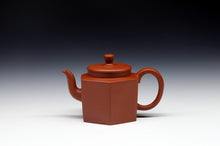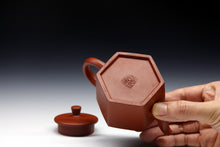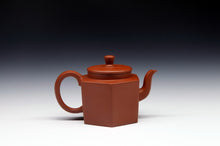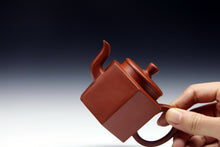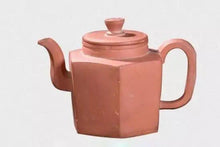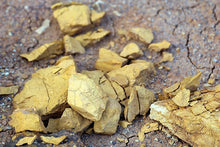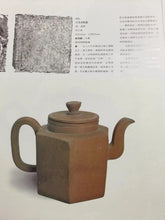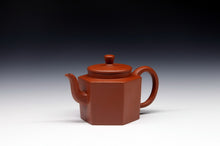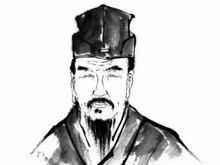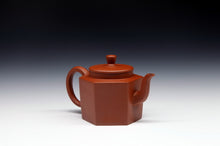
The so-called "one side of water and soil, one side of culture", in the vast land of China, there are always some treasures that give birth to amazing beauty, such as Yixing and its long-standing purple clay pot.
Today, Tongxinshe Teahouse recommends a fully handmade "Dabin Liufang Zisha Pot" with a capacity of 120ml. The original ore Huanglongshan Zhu Ni is selected. The appearance of Huanglongshan Zhu Ni is yellow, light red-yellow, and the cooked mud is relatively fine. Very good, it is not easy to wrinkle after firing. It is the main source of mud for Zhu Ni works in the Ming and Qing Dynasties, but Zhu Ni is difficult to form due to its low sand content and delicate mud. From raw embryo to firing, the shrinkage rate reaches 25% to 30%, the support degree is poor, and the general yield is less than 80%. Zhu Ni is firm and solid, with good air permeability, rosy and beautiful, and it is very easy to soak and wrap. Therefore, making tea with Zhu Ni is one of the must-have choices for anyone who loves pots. It is rosy and charming, with attractive luster. It is so beautiful that you can't take your eyes off the tea table. Therefore, it is very easy to crack or deform during the firing process, so the production level of the craftsman is also very high. It is suitable for tea lovers who love small teapots. The handle is smooth and comfortable to hold. The spout is also made of hexagonal. Small and delicate.
PS: This article is relatively long, and lnstagram text is limited. If you are interested in tea, I will write the article behind you in the message area, welcome to read.
Yixing Zisha teapots began in Song Dynasty, developed in Ming Dynasty, flourished in Qing Dynasty, and prospered in contemporary times. When Su Dongpo of Northern Song Dynasty lived in Yixing, he praised this place as a wonderful place where "the bamboo stove with pine wind and the teapots call each other". Li Yu, a scholar of the Ming Dynasty, believed that " The essence of the pot is none other than Yangxian.” The poem says, “The pearls and jades in the world are safe to take, is it like a pill of soil at the head of the Yangxian River.” This “one pill of soil” that surpasses the pearls and jades in the world is Yixing Zisha, Yixing Zisha teapot It is famous for its delicate clay, rich color, novel shape and diverse patterns. Its beauty of plastic arts, many shapes, and rich cultural connotations are unmatched by other ceramics. The shape of the purple clay teapot is simple and simple. The qi rises, showing the rhythm of tea; it is breathable and impermeable, and it is used to make tea, without taking away the aroma of the tea, and without the steam of the cooked soup; after using it for a long time, it will absorb the tea juice, and the empty pot will also have a tea aroma; regular rubbing can increase the luster and texture , Warm air, for tea people, a Yixing Zisha teapot is indispensable for a tea party. In the Yixing Zisha world, there is a well-known figure in ancient times - Shi Dabin.
Shi Dabin (1573-1648), who lived from Wanli in Ming Dynasty to Shunzhi in Qing Dynasty, was the son of Shi Peng, one of the "Four Masters" of Zisha, and a master of Yixing Zisha art. With his own strength, he sublimated the art of hand and clay materials of purple sand to the level of cultural techniques, which was also praised as "a thousand years". Gu Jingzhou, a master of Chinese arts and crafts, once said in his "Introduction to the History of Purple Sand Pottery": "Everyone who unanimously recommended in the history of sand art took Shi Dabin as an example. His contribution lies in: the creative innovation of sand art creation techniques, This is something that younger practitioners should sing praises for; more importantly, he left an amazing masterpiece for future generations, creating a precedent for Zisha art pottery culture."










